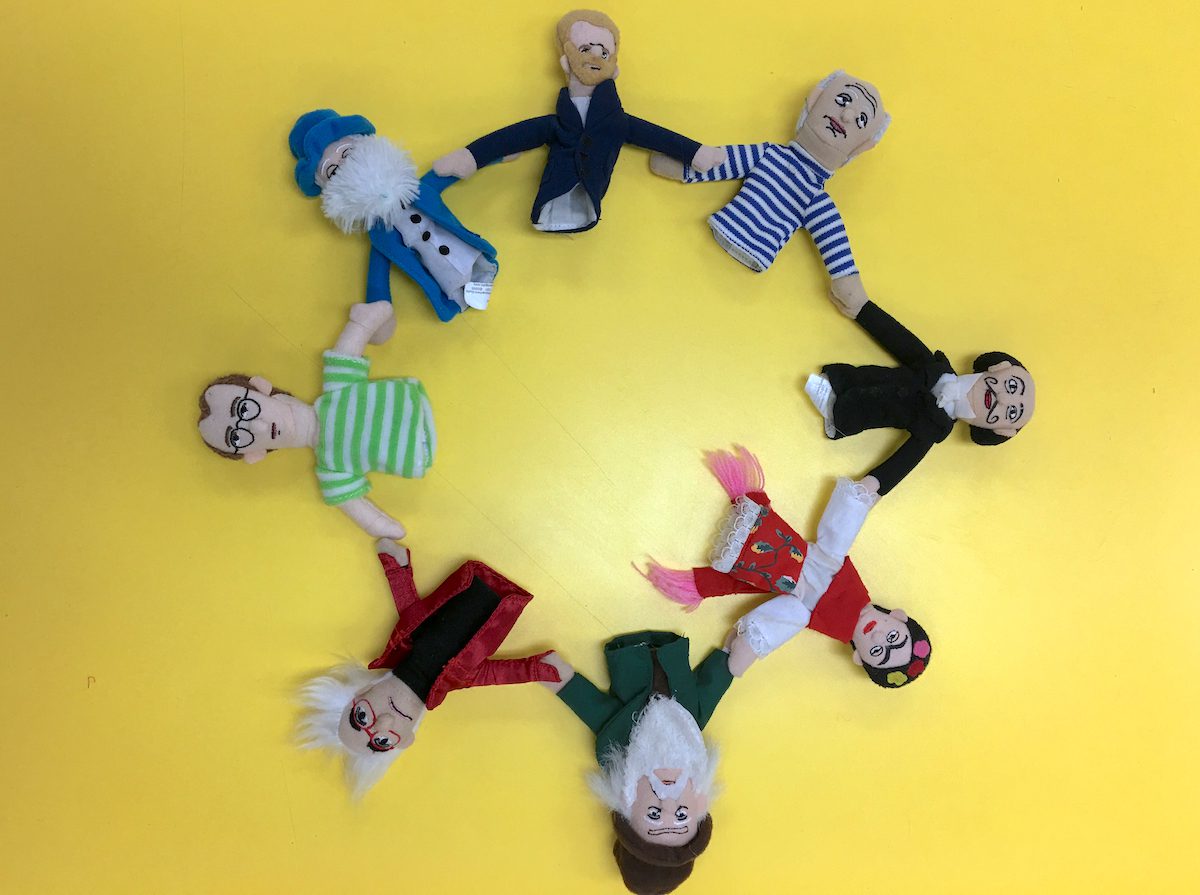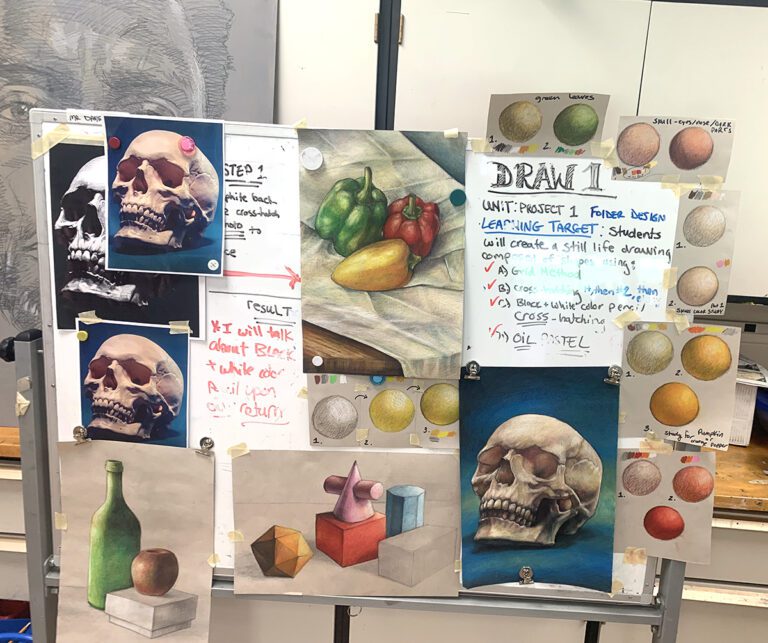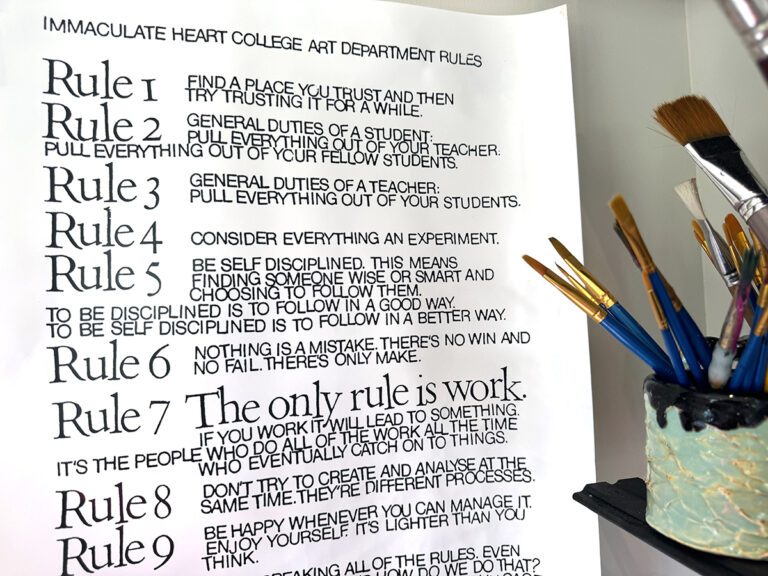“Well, good day (insert student’s name here)! Would you like to take a tour of my gardens? They are really quite breathtaking. We could paint en plein air together today!” says Mr. Monet, the finger puppet.
Watch as students’ eyes widen with excitement and they start speaking directly to the puppet on your finger.
Looking for a way to capture your students’ attention when teaching about particular artists? Why not use puppets? I have always found great success in my art room – puppets are FUN!
They have different voices, they are whimsical, and they relate to play. Students love my artist puppets so much they actually cheer at the sight of them. While you can –and should – create your own puppets, you can also buy an Artist Finger Puppet starter pack to get you rolling and test the waters.
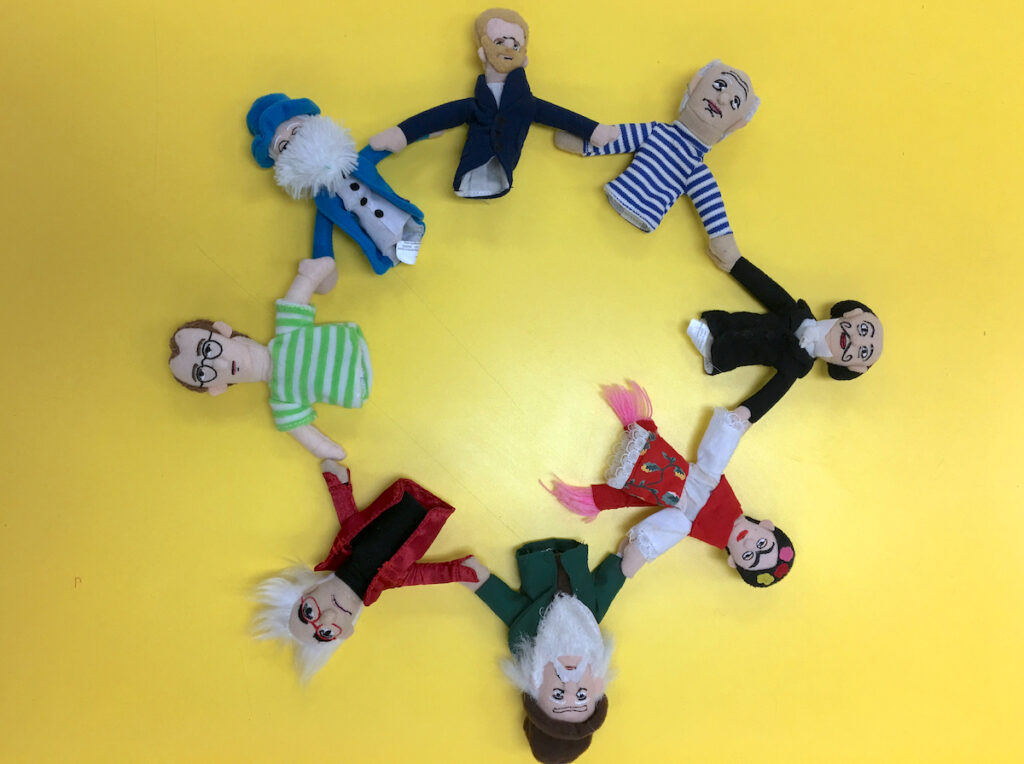
Note: Haring, Monet, Picasso, Klimt, Dali, Rodin, Homer, O’Keeffe as well as subjects of major works like Girl with a Pearl Earring and The Scream are sold separately and can be found on Ebay, Amazon, and in many museum shops. This is not a sponsored post. I simply love how these tiny puppets bring the artists to life for my students.
Here are 5 ways to use the puppets in your classroom.
- Have the puppet compliment or redirect students.
Monet could say, “Alex, you really understood the wet-on-wet watercolor method I demonstrated! Bravo!” or “Melanie, please read me step two from the easel aloud. Did you remember to do that?” Students love to interact with the artist puppet. I am constantly impressed by the directness and the authenticity of the conversations they engage in with my finger. - Have the puppet engage students in discussions about the direction of the work and the student’s artistic choices.
For example, “Lizette, I am wondering how you plan to create the reflection of the gardens in the water below the bridge?” Students will jump at the chance to demonstrate or explain to the famous artist the skills they’ve acquired and what they are planning. - As the teacher, create an ongoing dialogue with the puppets and intentionally let students “accidentally” overhear.
Drop important information you want students to know into these side conversations.
For example:
Monet puppet: Ms. Ten Hoeve, the light in your art room simply will not do! I am a plein air painter obsessed with natural light!
Teacher: I know you love to paint outdoors and natural light is your favorite, Mr. Monet. I’m thinking maybe we should go outside instead so the students can paint with natural light as well. - Use them to label cabinets or other art room areas.
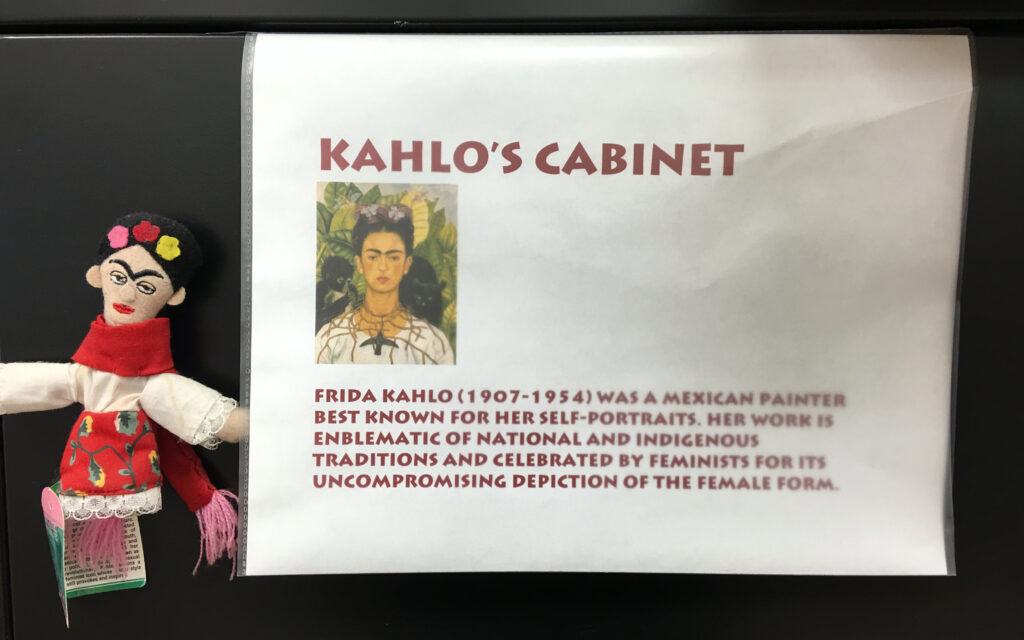
Because the artist puppets have magnets built in, you can use them to label metal storage cabinets. Are your storage areas wood or covered with curtained panels? Stick a bit of Velcro or a pin on the back instead! You can even add a brief bio next to where the puppets will “live.” This way, students get a quick mini-lesson when they go to retrieve materials. Plus, you can direct students to what they need by sending them to the “Monet Cabinet” instead of “the third black cabinet from the right.”

- Allow time for students to participate in Q and A with the artist puppet.
Students will ask insightful and interesting questions which will allow you to teach them so much more than you bargained for!
As an important aside, puppets are particularly effective tools when working with students with Autism.
I have students with Autism that have never made eye contact with me and yet they smile and engage the puppets in conversations to no end! It works so well I’ve made several other teachers puppet versions of themselves. They confirmed the same results; information presented by the puppet is received and retained better than information presented by the teacher.
Whether you teach students with Autism or not, puppets will be a hit in the art room! And, if you’re looking to learn even more about working with students with Autism in the art room, be sure and check out AOE’s course, Autism and Art, where you’ll dive deep into the latest research and create tools to immediately use with your students.
Do you already use puppets in the art room? If so, how?
Do you have any concerns about using puppets for instruction?
Magazine articles and podcasts are opinions of professional education contributors and do not necessarily represent the position of the Art of Education University (AOEU) or its academic offerings. Contributors use terms in the way they are most often talked about in the scope of their educational experiences.
